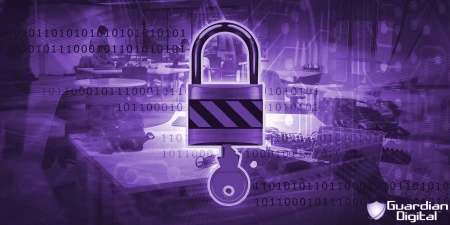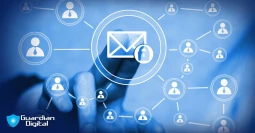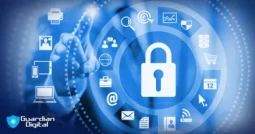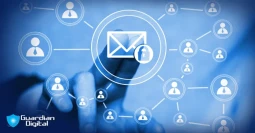Under Lock and Domain: Your Guide to Hijack-Proof Security

These attacks can damage your reputation and break customer trust. More businesses are moving to the cloud, and strong email security services are an investment that will help you stay ahead of the game. A large shift toward Microsoft 365 email security services">Microsoft 365 email security services is due to their advanced protection against phishing and domain-based attacks.
According to the 2024 Domain Security Report, hijackers most often target well-recognized and trusted domains because they seem more credible. This guide will explain what domain hijacking is, the damage it can do, and how tools like Microsoft 365 can protect your business.
What is Domain Hijacking?
Domain hijacking occurs when attackers gain unauthorized access to a domain. They often exploit gaps in phishing prevention, weak DNS security, or inadequate domain privacy protection. Without strong malware protection and email authentication protocols, domains are vulnerable to spoofing and manipulation.
Attackers use these hijacked domains to conduct harmful activities, such as impersonating trusted entities or launching phishing attacks through spoofed domains. By using tools like Microsoft 365 email security services, businesses can strengthen their defenses and reduce vulnerabilities.
How Can I Tell If My Domain Has Been Hijacked?
To spot a hijacked domain, look out for these key warning signs:
- Unexpected DNS Changes: If the DNS settings for your domain change without your permission, it's a strong sign that it might have been hijacked. Routinely performing a domain health check can help you keep an eye on DNS settings and spot unauthorized changes early.
- Sudden Drops in Website Traffic: Your normal online traffic may decrease if your domain is taken over and traffic is sent to unauthorized sites. Check your website's data for any unexpected changes.
- Unusual Login Activity: Keep an eye on your login history for strange IP addresses or failed attempts to log in, as these could be signs of a hacking attempt. Guardian Digital's security solutions are made to find these kinds of problems and deal with them effectively.
Hijacked domains are especially dangerous because they often get past email filters and look like real emails to people who receive them. Using real-time monitoring and predictive models, IT teams can quickly identify unauthorized changes and take appropriate action before further damage is done.
How to Prevent Domain Hijacking?
The basic steps to secure your domain include establishing layered defenses and monitoring for unauthorized changes in real time. Multilayered defense and advanced threat protection are part of security best practices and can help detect and prevent unauthorized changes. With a few simple tools in place, you can protect your domain.
Registry locks and domain privacy protection work together to protect your domain by preventing unauthorized access to sensitive registration details and locking critical settings when changes are attempted. Pairing this with DNS security ensures that no unauthorized changes can redirect traffic to malicious sites.
DNSSEC, which works at the gate level to ensure that visitors to your domain land on your legitimate site while keeping clear of a visitor being directed to malicious sites. These measures, alongside cloud email security services, provide comprehensive protection.
Finally, CAA records decide who issues the SSL certificates for your domain. Thus, these protections reduce the attacker's chances of issuing fake certificates and maintain trust in your domain's credibility. Combined, these protections make it much more difficult for hackers to use your domain.
Combine these with continuous monitoring to detect unauthorized changes in real time and uncover suspicious activities. This grants visibility critical to addressing threats without delay. Using pattern-based detection based on domain activity, predictive modeling can find potential hijacking attempts early, giving your security team interventions long before threats escalate. Adding phishing prevention tools ensures that attacks are stopped before they begin.
What to Do if Your Domain is Hijacked
If someone takes over your domain, you should move quickly to limit the damage. First, get in touch with your domain registrar right away. Most of them have recovery procedures for domains that have been hacked. Then, check your DNS settings to make sure there have been no unauthorized changes. Change them back to how they were before, and make sure your DNS security and malware defense systems are running to stop any more attacks. Lastly, let people who were harmed know if phishing attempts using fake domains happened. This could be customers, workers, or business partners. Using SPF, DKIM, DMARC, and other email authentication methods to stop phishing can help lower future risks and rebuild trust.
Securing Your Domain Against Threats
Organizations should use DNSSEC, registry locks, and domain health checks to avoid domain hijacking. Integrating advanced threat protection tools helps identify spoofed domains and ensures your business stays ahead of evolving threats. These tools will enable IT teams to be one step ahead of any potential threat and react well in time against any suspicious activity.
Cloud platforms like Microsoft 365 offer critical threat management tools, but combining these with cloud email security services and following security best practices provides unparalleled protection against hijacking. This allows your business to avoid catastrophe by proactively protecting your domain while investing in more sophisticated monitoring solutions.
Other FAQs
- What Is Guardian Digital EnGarde Cloud Email Security?
- FAQs: What Are Some Examples of Malicious Code?
- How to Properly Scan Your Windows Computer for Malware & Remove Malware from Your PC
- FAQs: What Are Denial of Service (DoS) Attacks?
- FAQs: Why Outsource Businesses Email Security?
- What Is Domain Spoofing?
- What Are Insider Threats & How Can You Reduce Your Risk?
- The Silent Assassins: How Impersonation Attacks Target CEOs via Email
- How Can I Choose the Right Email Security Service for My Organization?
- What Are the Benefits of Managed Security Services Providers (MSSPs)?



